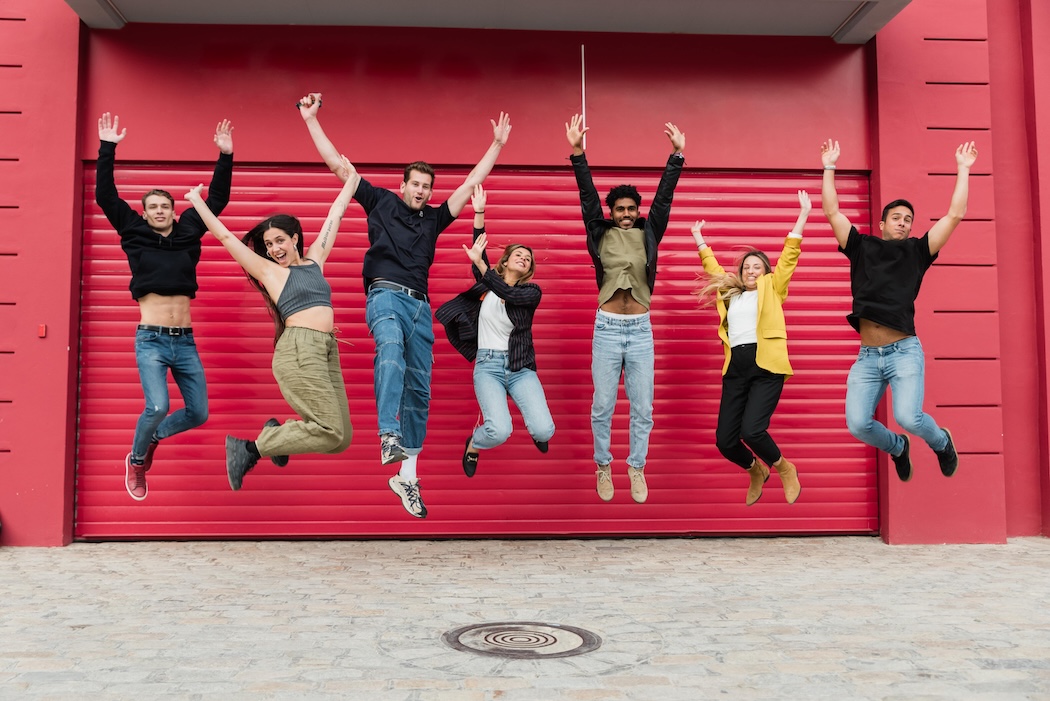Every company wants a high-performance culture—one where employees are engaged, motivated, and consistently go above and beyond. But what actually fuels such a culture? It’s not just strategy, tools, or KPIs. It’s recognition.
Recognition is the heartbeat of high-performing teams. It creates an environment where people feel valued, motivated, and proud of their contributions. But here’s the catch: recognition can’t just happen randomly or once in a while. To truly transform culture, it must become a ritual—a regular, intentional, and visible part of how a company operates every day.
In this article, we’ll explore how recognition rituals can turn appreciation into a performance-driving force and practical ways to build them into your organization’s DNA.
What Are Recognition Rituals?
A recognition ritual is any recurring activity that celebrates achievements, milestones, or contributions in a consistent and meaningful way. It’s recognition with rhythm.
Think of it like this: if recognition is a language, rituals are how you speak it fluently and frequently.
Recognition rituals can be:
- Weekly team shoutouts during meetings
- Monthly peer-nominated awards
- Public digital kudos via tools like the Karma recognition bot
- Yearly “innovation celebration” events
- Even small, consistent gestures like sending thank-you notes every Friday
These rituals create predictability. Employees know recognition is part of the culture—not a random act of kindness, but an expected expression of respect and appreciation.
Why Rituals Matter in Building a High-Performance Culture
According to Gallup, only 1 in 3 employees strongly agree that they’ve received recognition or praise for good work in the last seven days. That’s a major missed opportunity. Regular recognition doesn’t just make people feel good—it builds behaviors that drive measurable results.
Here’s why recognition rituals matter:
1. They Reinforce Core Values
Rituals translate your company’s values from posters on the wall into lived experiences. When employees see recognition linked to values like teamwork, innovation, or customer focus, those values become part of everyday behavior.
2. They Build Psychological Safety
When recognition is frequent and inclusive, employees feel safe to speak up, take risks, and share ideas. This sense of safety fuels innovation and collaboration.
3. They Drive Consistent Performance
Rituals help maintain momentum. Instead of waiting for annual reviews or big milestones, recognition keeps performance visible and motivation steady throughout the year.
4. They Strengthen Belonging and Connection
Recognition rituals bring people together. Whether in-person or remote, these shared moments of appreciation remind employees that they’re part of something bigger—a team that notices and values their effort.
The Link Between Recognition and Performance
The connection between recognition and performance is no longer anecdotal—it’s proven.
- Companies with strong recognition cultures see a 31% decrease in turnover (WorkHuman).
- Teams that regularly recognize achievements experience a 12x increase in business outcomes (Deloitte).
- Employees who feel appreciated are 44% more likely to produce above-average results (OC Tanner Institute).
In short, recognition rituals don’t just improve morale—they improve metrics.
When employees are consistently recognized, they develop stronger engagement, take ownership of outcomes, and actively seek ways to improve performance.
Designing Recognition Rituals That Actually Work
Not all recognition rituals are equally effective. The key is to design them intentionally—so they align with your culture, fit your workflow, and genuinely resonate with your people.
Here’s how to do it:
1. Start With Your “Why”
Before introducing new rituals, ask: What do we want recognition to achieve?
Do you want to encourage innovation, strengthen collaboration, or improve retention? Defining your goal helps shape rituals that drive the right behaviors.
For example:
- If your goal is to foster collaboration, create team-based recognition moments.
- If you want to inspire innovation, celebrate creative problem-solving in monthly “innovation highlights.”
When the “why” is clear, recognition becomes strategic—not just symbolic.
2. Make Recognition Visible and Inclusive
Recognition is most powerful when everyone can see it. Public appreciation builds momentum, sets positive examples, and encourages others to engage.
Digital recognition platforms like Karma make this easy. Teams can share real-time kudos in chat channels, give Karma points, and even tie recognition to specific company values or KPIs.
Inclusion is just as important. Recognition shouldn’t be limited to star performers—celebrate consistent effort, behind-the-scenes contributions, and growth milestones too.
3. Create Regular Rhythms of Recognition
Rituals thrive on consistency. Build recognition into your organization’s calendar so it becomes part of the routine, not an afterthought.
Here are some ideas:
- Monday Motivations: Start the week with a quick team check-in and recognize wins from the previous week.
- Friday Shoutouts: End the week by spotlighting great teamwork or achievements.
- Monthly Awards: Celebrate those who’ve gone above and beyond in living company values.
- Quarterly Reflections: Highlight long-term goals achieved and lessons learned.
Consistency breeds culture. The more predictable recognition becomes, the more naturally it integrates into daily operations.
4. Balance Individual and Team Recognition
Both individual and team achievements deserve attention. Individual recognition motivates personal accountability, while team recognition strengthens collaboration and unity.
For example:
- Individual: “Alex, your detailed QA testing helped us avoid a major issue in the release—excellent work!”
- Team: “Fantastic collaboration, everyone! We hit our launch date and delivered a smooth rollout thanks to your teamwork.”
Balancing both ensures that everyone feels valued—whether they shine solo or as part of a collective effort.
5. Tie Recognition to Measurable Outcomes
Recognition feels most impactful when it connects to real business results. This also reinforces the link between performance and appreciation.
For instance:
- “Thanks to your quick response times, our customer satisfaction score improved by 10% this quarter.”
- “Your redesign reduced production costs by 15%. That’s an incredible achievement that moves us closer to our yearly goal.”
By connecting recognition to measurable outcomes, you make it clear that appreciation isn’t arbitrary—it’s earned through meaningful contributions.
6. Encourage Peer-to-Peer Recognition
Top-down recognition is important, but peer-to-peer recognition builds stronger communities. Peers often see the everyday wins managers might miss.
According to SHRM, organizations that implement peer-to-peer recognition programs are 35% more likely to report lower turnover and 41% more likely to see improvements in customer satisfaction.
Using a digital tool like Karma, employees can instantly appreciate each other’s efforts in chat platforms like Slack or Teams—creating a continuous flow of positivity and acknowledgment.
7. Celebrate Milestones, Not Just Metrics
High-performance cultures aren’t built only on hard numbers—they’re built on human moments. Recognize birthdays, work anniversaries, learning milestones, and personal growth achievements.
These small but meaningful gestures build loyalty and show employees they’re valued as people, not just performers.
Rituals That Work: Real-World Examples
- Google’s “Thank You Thursdays”: Every Thursday, Googlers send public notes of appreciation through an internal recognition tool. It’s short, informal, and deeply embedded in their culture.
- Zappos’ “Hero Awards”: Employees nominate peers for embodying company values. Winners are recognized company-wide, reinforcing cultural alignment.
- HubSpot’s “Spotlight Stories”: Teams share stories of colleagues who went above and beyond, creating a storytelling ritual around recognition.
These examples show that rituals don’t need to be complicated—they just need to be consistent and meaningful.
Turning Recognition Into a Habit
The ultimate goal is for recognition to become a natural reflex—a daily habit rather than a planned event. To achieve that, leaders and managers must model the behavior.
When leaders actively and visibly participate in recognition rituals, it signals that appreciation is a priority, not a task.
Start small:
- Send one message of appreciation per day.
- Open every team meeting with a quick shoutout.
- Use Karma to celebrate daily wins publicly.
Over time, these small actions accumulate into a culture of gratitude and high performance.
The Results: Recognition Rituals That Pay Off
When recognition becomes ritualized, the payoff is enormous:
- Higher engagement: Recognized employees are 5x more likely to feel connected to their work.
- Better collaboration: Recognition fosters trust, transparency, and teamwork.
- Improved retention: Appreciated employees are 23% more likely to stay long-term.
- Stronger performance: Recognition correlates with a 19% increase in overall productivity (Gallup).
A recognition-rich culture doesn’t just make people happier—it makes them perform better.
Final Thoughts
Building a high-performance culture isn’t about pushing people harder—it’s about recognizing them smarter. Recognition rituals turn appreciation from a one-off event into a shared habit that drives motivation, collaboration, and excellence.
When employees know their work is seen and valued, they bring their best selves to every challenge. And when recognition becomes a ritual, performance becomes a culture.
With tools like the Karma recognition bot, you can embed these rituals into your team’s daily rhythm—making it effortless to celebrate wins, foster connection, and build a culture where performance and appreciation thrive side by side.
Because high performance isn’t just achieved—it’s recognized, every step of the way.


 Tailoring Recognition to Different Performance Styles (Introverts vs Extroverts)
Tailoring Recognition to Different Performance Styles (Introverts vs Extroverts)